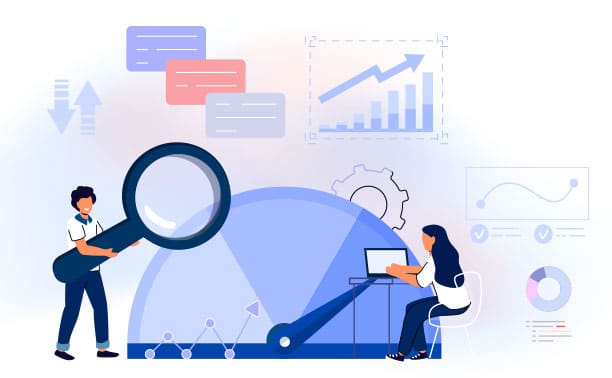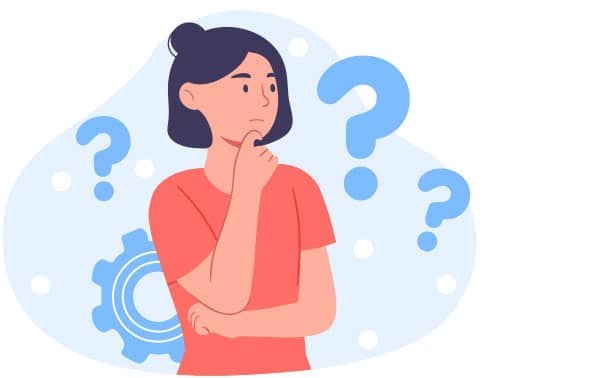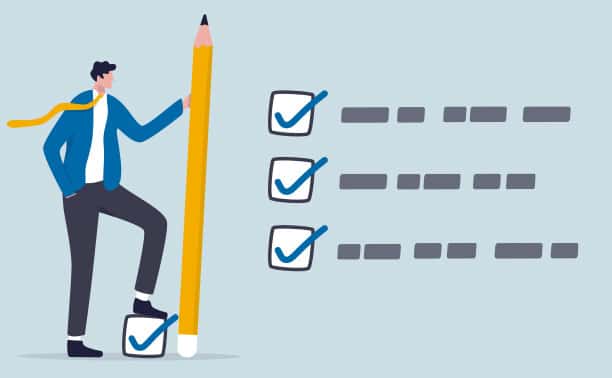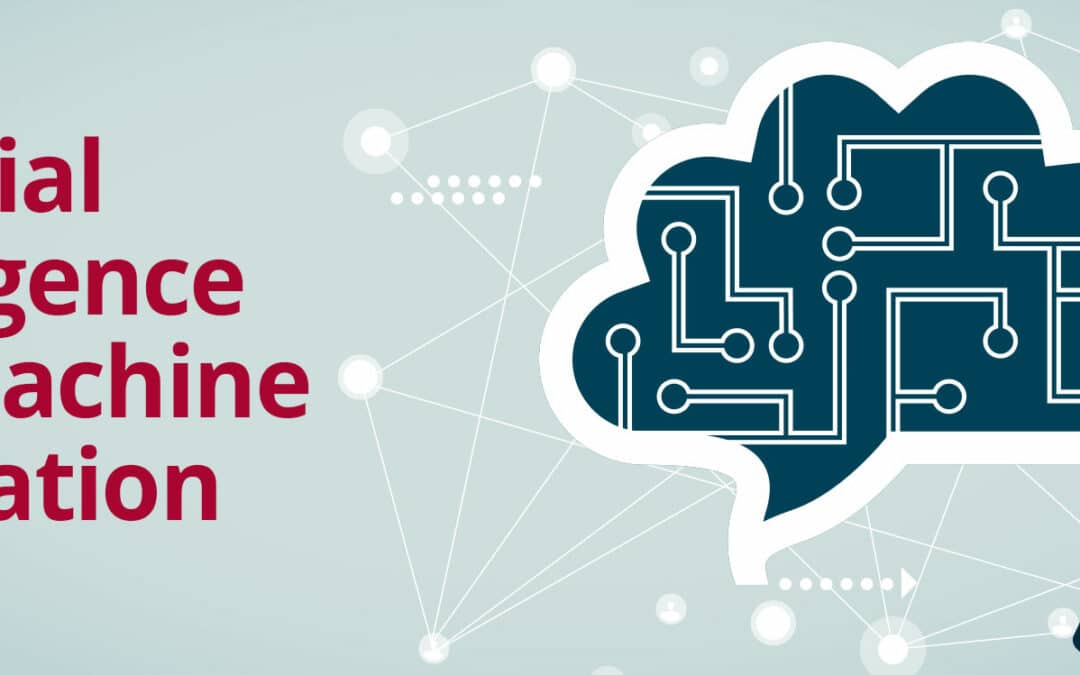Chatbots such as ChatGPT, Bard and others have recently shown us just how powerful and useful generative artificial intelligence (AI) can be. Taking the form of an endlessly growing number of tools and releases, generative AI draws on massive amounts of data from the web to create an extraordinarily vast range of content with unprecedented speed and ease. More and more people are trying out the tools and learning how to make the most of them, though many remain unaware of the risk of factual inaccuracies and ethical issues like copyright infringement.
All around the world, this breakthrough in generative AI has also radically increased demand for translation into any number of languages for millions of organizations. The good news, one might think, is that tools like ChatGPT can also translate. Why not use the same tool, then, to both create and translate content? In fact, why not save time and cut costs by having internal staff do it all themselves? That strategy might just work in certain situations, mostly to meet individual needs. But across an entire organization, it’s a risky approach for two big reasons: AI tools generally don’t protect confidential information, and the accuracy of translations remains unpredictable. Businesses that underestimate those risk factors may end up facing problems and paying more than they bargained for.
That’s why selecting the right tools is key. So is using them the right way. Who should or shouldn’t use AI tools? What process or framework is required to ensure professional and technical compliance with organizational standards? Such decisions should be dictated by the value you place on the content or data and who the target audience is. In this post, we’ll discuss both the selection and use of AI tools.

AI vs. conventional machine translation: Different technologies
Leading new AI tools like ChatGPT are built on large language models (LLMs) that draw on massive datasets from countless sources (also known as big data). The technology underlying these tools works differently than that used in neural machine translation (MT) engines, which have been successfully used for years now.
We know that the use of LLMs has been a game changer for content generation. It may come as a surprise, then, that LLMs don’t really improve translation quality by comparison with neural MT. All expert testing shows that these two technologies have similar, but not the same limitations.

Key factors to consider
Security and confidentiality
With professional MT tools, you can maintain confidentiality because access to their contents can be restricted to a specific organization in a number of ways.
It’s a different story with mass-market MT and AI tools, like ChatGPT, which don’t protect any of the data used to generate or translate content. Your organizational data ends up in the public domain, accessible to virtually anyone. If they didn’t appropriate data on such a massive scale, though, AI tools wouldn’t be nearly as effective.
Industry- or organization-specific content
Many professional MT tools are “trainable” in that they can be fed content, or corpora, specifically related to a given organization or industry. That kind of training significantly improves the quality and relevance of the translations and terminology.
Theoretically, certain AI tools such as ChatGPT can also be trained, and eventually, programs that better leverage the generative potential of LLMs and the precision of curated corpora will make it to market.
Translation capabilities
While the quality of raw MT output has improved over the years, it remains unpredictable with all tools—both AI and MT. Even today, a machine-generated sentence can say the exact opposite of your intended message. MT output can also include vulgar and offensive wording, or even completely nonsensical statements referred to in the AI world as hallucinations.
There’s a very simple reason for that: although the “intelligence” in “artificial intelligence” may lead us to believe otherwise, no matter how powerful or advanced, these AI tools still just rely on statistics and probabilities. They basically choose the letter or word most likely to come after the previous ones. Admittedly, they work so quickly and with so much data that the results are better than ever. But AI tools don’t actually understand the text at the sentence or word level, let alone the context or meaning of the message as a whole. It means that without professional revision or quality control, the accuracy of MT output depends strictly on mathematical probabilities.
And that’s one of the reasons why MT and AI tools don’t perform as well for certain topics, types of copy (including the most creative) or formats (such as PowerPoint presentations loaded with short phrases with no context).
Also keep in mind that the quality of the output drops sharply when dealing with the many languages for which there isn’t yet a sizeable enough volume of current, diversified and reliable content to work from.

When should machine translation be used?
The latest AI and MT tools are extremely useful, especially to help people immediately understand the gist of content created in languages other than their own. Even translations that aren’t totally accurate and don’t use the organization’s own terminology can prove valuable when basic understanding’s the goal.
But for text intended for broader audiences, the stakes are much higher and go far beyond basic understanding. Think of all the content an organization creates and shares to nurture strong customer or employee relations, highlight financial results, bolster its brand as a business and employer, or build a great reputation in its target markets and in the media. If you rely solely on AI or MT tools, there’s a very good chance the translations will contain serious errors that could negatively affect the business or be catastrophic for its image.
With the exception of texts that not more than a handful of people need to understand at a basic level, all machine translations should absolutely be reviewed and edited, if not retranslated. This work should be left in the hands of people who are familiar with the organization and the subject matter, and who work in the relevant language combination. In other words, there’s still a need for human intelligence. After all, organizations are responsible for the content they create and share.

Reviewing and correcting machine translations: Whose job is it?
Content managers who choose to machine-translate and review their own content to save time and money may find that it’s not as cost-effective or straightforward as they expect. First of all, assessing, reviewing and correcting content in a language in which they may not be totally fluent—or in which their writing skills may be lacking—is a high-risk undertaking. Secondly, they may underestimate the time commitment needed to edit MT output, format it properly, share it, and update it whenever required. Last, but certainly not least, they may not be in a position to know which tool will deliver quality MT output while also protecting the organization’s confidential information (unlike public web-based solutions).
It’s time for the hype surrounding AI to shift to a collective focus on using it securely and without infringing on intellectual property rights or inadvertently leaking confidential information. Much of the expected savings from using AI and MT can quickly be negated by the time and effort required to deliver translations that meet an organization’s quality and information-security standards.
As with more conventional translation and content creation, it pays to call on language professionals to help select, use and optimize MT solutions. The sooner an organization gets language experts involved, the lower the risk of choosing a tool ill suited to its needs and thus ending up with subpar translations and jeopardizing confidential information.
Professional translation companies give you access to the best and safest tools, right from the get-go. They deliver optimal results every step of the way with processes that are professionally and technologically sound.

Better tools, better processes, better results
Translation companies today use a whole series of translation automation tools that have become part and parcel of their expert processes. These new tools and processes also mean new services and specialized job profiles in project management and language teams alike.
One of the most notable—and quickest and most affordable—new services available from professional translation companies is postediting. Recognized and regulated as a full-fledged specialization since 2017 under ISO 18587, postediting is the correction, by a language professional, of AI-generated or machine translations.
The benefits of professional postediting
- Highly qualified teams: Both project managers and language experts have unique profiles and skills in line with ISO 18587 standards, which translates to reliable and efficient service. Training and development is an ongoing process for all postediting experts.
- Access to multiple tools: Professional translation companies thoroughly test the AI and MT tools on the market and may even use several for the same project to benefit from their respective strengths: their output quality, the relevance of the corpora or their training capacity, for example.
- Guaranteed confidentiality: The best professional translation companies provide clients with secure AI and MT tools. They can host certain tools on their own servers and create dedicated translation engines trained with corpora belonging to the client.
- Optimal training: Translation companies constantly feed their automated translation tools with high‑quality, industry- and client-specific content. To maximize the reliability of the corpora, the client can have them revised by language experts before use. That ensures the messages are appropriate in context and faithful to the source text, and use correct terminology.
- Custom levels of postediting: Since subject matter, style, complexity and format greatly influence the quality of MT output, some translations need only minimal postediting, while others must be extensively reworked. Professional translation agencies will always offer the exact amount of postediting required to protect their client organizations while keeping turnarounds and costs to a minimum.

Three levels of AI services available from translation agencies
1. Machine translation without postediting, using a trained and secure system, for understanding only
Your business frequently receives confidential documents in languages that no one on your staff understands. You need to quickly figure out what they’re about and whether any action’s required. If it’s a request for proposals, for example, will your business choose to bid?
Using a mass-market AI or MT tool is out of the question: it would prove neither secure nor effective for this kind of specialized content. Leveraging optimal processes, professional translation agencies can use secure, trained and dedicated tools to quickly deliver very affordable translations that are fit for purpose for your staff to understand the gist and make decisions.
2. Machine translation with light postediting for content that is low impact or has a short shelf life
Your business manages all kinds of internal documents that need to be available in more than one language. This content has minimal strategic value to the organization and is used only once in a while by a limited number of your staff. It’s often confidential, though, and contains specific information about your business or industry. Making it available in two or more languages may require a fair amount of translation in a short amount of time.
Professional translation companies can generate rough translations using secure, dedicated MT tools. Posteditors specializing in the appropriate field or industry then make only basic linguistic corrections to quickly and economically deliver documents that are ready for use by some of your in-house staff.
3. Professional translation using AI and MT for optimal results
Using machine translation without oversight by language professionals is still a high-risk option for any content an organization creates and shares to nurture strong customer or employee relations, highlight financial results, bolster its brand as a business and employer, or build a great reputation in its target markets and in the media.
The good news is that professional translation now leverages AI and MT in addition to more conventional CAT technology such as translation memories, termbases and bilingual search engines. Language professionals make use of all of these in order to work faster, automate repetitive tasks and improve consistency. With their language skills and subject-matter expertise, they’re always in the driver’s seat—taking advantage of cutting-edge technology to translate and edit in compliance with recognized industry standards. The result is professional-quality translation, delivered with maximum efficiency.
One more benefit of dealing with a professional translation company is that specialists quickly and carefully assess whether it makes sense to use AI or MT tools. If automated translation means greater risk or higher costs for you, they can explore other options with you from the outset. Your best bet for quality translations and maximum savings is to rely on language experts who know how to get the most from leading AI and MT solutions, and to save your content managers from wasting precious time and money.

Make Versacom’s expertise and flexibility work for you
Versacom’s language professionals have always made it their mission to research and leverage game-changing technology. That’s why we now offer AI and MT solutions driven by the very best tools and processes. Better yet, you securely access those solutions through an exclusive client portal.
Our team of technology experts keeps abreast of new developments through a comprehensive monitoring and continuous improvement program. We thoroughly test every new product or release and promptly build any value-adding technology into our existing infrastructure. Beyond products and features, our decisions are guided by strategic, big‑picture considerations so that we’re sure to choose tools that are suitable for our client organizations.
AI and MT solutions are backed by Versacom’s usual guarantees: total confidentiality and customization. We leverage secure and dedicated tools that can be hosted on our own servers and draw on relevant corpora, which our language experts update and correct on a regular basis using the industry’s leading databases. Our understanding of all professional and technological requirements allows us to provide every client organization with a tailored solution, including customized corpora and lexicons.
What’s more, we’ve integrated AI and MT at every level of our professional processes. Our numerous certifications include ISO 18587, which is specifically focused on professional postediting. In addition to service quality, cost control ranks high on the list of our project managers’ priorities. Working with the language industry’s most seasoned and best-trained experts certainly helps them deliver on those commitments.
At Versacom, we’re equipped—with AI, MT and other cutting-edge technology—for the challenges facing our industry and our client organizations. We choose and use it to become ever more flexible and efficient, helping you meet unprecedented business requirements.

